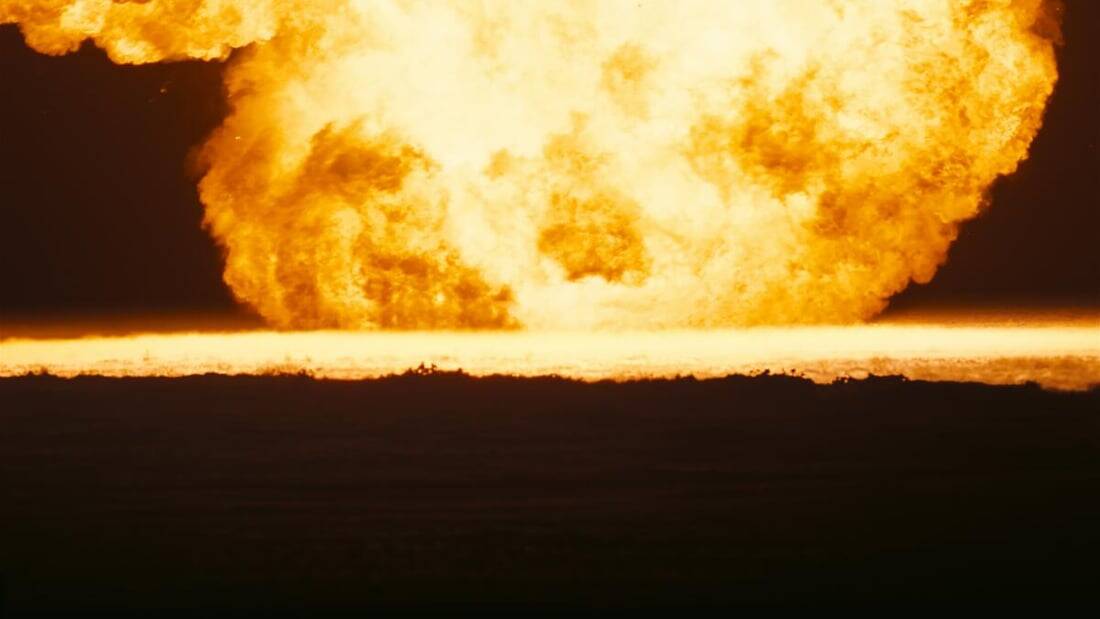Oppenheimer Ending Explained – A Deep-Dive Into ‘The Destroyer Of Worlds’

“Now, I am become Death, the destroyer of worlds.”
If, by now, you’re one of those people who instantly recognize this quote and which movie you saw it in, join us as we explore the movie itself and its mindblowing ending.
Recommended:
What To Expect In Oppenheimer
Oppenheimer gave the world our best peek into a past that should never have happened. As biopics go, this one saw Christopher Nolan at the top of his game portraying vital moments and milestones in the life of the revered and respected – but more often despised and misunderstood – American theoretical physicist J. Robert Oppenheimer.
Nolan not only used practical effects to re-create the impact of a nuclear bomb, of all things, but he also expertly showcased the politics and bureaucracy that plagued the Americans’ atomic bomb project.
The script adapted the non-fiction book American Prometheus: The Triumph and Tragedy of J. Robert Oppenheimer. As for the movie, it took relevant liberties to dramatize the message at the heart of the book.
Recommended:
Oppenheimer Ending – Quick Overview
The ending of Oppenheimer proved to be a grim but detailed peek into a speculative future. The sight of a destructive nuclear-ravaged Earth may, to some people, feel like an obvious alarm.
After all, what happened after the atom bomb was invented led to nothing but suffering, death, and strife for millions. Today, we have something much worse to worry about, namely global nuclear war.
Was the Oppenheimer movie ending actually hinting at that dark truth? Or was there more to the picture than met the eye?
Recommended:
Bombs Away! – Potential Reasons Behind Oppenheimer’s Explosive Ending

We mentioned the notion of nuclear war earlier. Before we get into that again, let’s dive into what we already know from the Oppenheimer movie. These tidbits of observed data will help fans and movie enthusiasts appreciate the little details which built up to that intriguing finale in the Oppenheimer 2023 movie.
Destroyer of Worlds
The movie does not hide the powerful points mentioned in the book from which it was adapted. In fact, one point has been circulating for a long time, even before the book.
The point being, the first atom bomb test conducted could’ve destroyed the entire world! Technically, atom bombs follow the laws of quantum physics. On July 16, 1945, the plutonium implosion device the Americans tested at a site south of Los Alamos, New Mexico, was their first atom bomb test for wartime application.
However, there was supposedly a small chance that the fission reaction caused by the Trinity test could’ve gone on to trigger an “atmospheric ignition.” This means that the heat generated by the bomb’s atomic cores, aka nuclei, could’ve blazed the air’s nitrogen atoms and went on blazing them.
Such an unstoppable reaction could, in all probability, have set the atmosphere burning not just at that test site but all over the world. Oppenheimer succinctly shares (in the movie) how the chances of the Trinity test detonation destroying the world were “near zero” and not zero itself.
Historical Truth
However, the movie seems to have taken liberties to add that possibility. Nowhere in recorded history has Oppenheimer been quoted that way. Not exactly, anyway…Physicists and historians are of one mind on this matter.
Alex Wellerstein, an associate professor at Stevens Institute of Technology in Hoboken, N. J., has denied such specific words were ever exchanged between the general (at the time) and Robert Oppenheimer.
However, Wellerstein didn’t rule out the possibility altogether. In fact, he’d added, “But were there discussions like that? I believe so.”So perhaps the Trinity test – which was a full-fledged theory before the test was conducted – could’ve ended all life as we know it way back in 1945.
That moment, by extension, proves just how perilous today’s nuclear arsenal can be in the wrong hands.
Oppenheimer & Einstein
It was no secret that Albert Einstein fulfilled the role of mentor and confidant to Robert Oppenheimer. In fact, Einstein’s theory of special relativity was an integral concept in the realm of Physics that helped Oppenheimer develop the atomic bomb.
In the movie, we see the two of them interacting in strange almost secretive ways, like they know something the rest of us don’t. In truth, Einstein played no direct role in making the bomb.
His famous equation E = mc^2 defines how energy is equal to mass times the speed of light (squared). This concept essentially explains how the energy released by an atomic bomb might function.
From the start, Einstein was against the making of any weapons of mass destruction. Tom Conti’s (the man who played Einstein in the Oppenheimer movie) reactions in the film clearly reveal that sentiment.
Let’s not dive into the intricate history and leftist politics that revolved around Einstein and the building of a bomb. If you’ve read this far, you already have a clear picture of where Einstein stood concerning what Oppenheimer wanted to achieve.
Atom >>> Hydrogen >>> Nuclear
Was building nukes (as we know them today) the plan all along? In the Oppenheimer movie, we see how the scientists gathered at Los Alamos were already discussing the ‘pressing’ need for a hydrogen bomb to counter the rising Russian threat.
They needed to start somewhere, so they reasonably began with developing the atom bomb. After all, the elements, concepts, and equations used to make it are foundational to help build a hydrogen bomb, which in turn can dictate the creation of a full-fledged nuclear bomb.
Don’t get us wrong, the science is uniformly nuclear. Each of those bombs relies on a nuclear reaction to detonate. We simply feel the plans for modern nukes might already have been in the pipeline back in the 40s (if not earlier).
Anyway, if you were going to become the “destroyer of worlds,” chances are your penchant for destruction will only grow and grow. In other words, make one bomb, watch it work, and you’ll start feeling the urge to make a bigger and better bomb.
The movie does not explicitly highlight the United States’ nuclear ambitions, but seeing as how the country went from Oppenheimer’s atom bomb in 1945 to possessing more than 3,000 (that we know of) nuclear weapons in their military stockpile today, we believe our guesswork is spot on.
What Does Christopher Nolan Think?
Showmanship aside, Christopher Nolan apparently wanted to convey the gravitas and urgency of nuclear war in today’s world. Through Oppenheimer’s final conversation with Einstein, the renowned movie director seems to extrapolate and speculate on a potential future where the initial invention of an atom bomb goes on to burn the modern whole world in nuclear fire.
Christopher Nolan’s words tell his side of things best. He shared in an interview, “The whole film is about consequences. The delayed onset of consequences that people often forget.”
Recommended:
An End To Remember
Oppenheimer ended with its titular hero – or villain, depending on how you see him – projecting himself into a future where he finds himself inside a military aircraft watching the world burn.
His Bhagavad Gita inspired quote, “Now, I am become Death, the destroyer of worlds” inspires a perfectly timed echo in that moment, with nukes and rockets flying all over the world, leaving vapour trails, and followed soon after by a nuclear fallout spreading fiery death.
If you’re thinking how frightfully nihilistic the Oppenheimer ending is, you’re not alone. The finale of Oppenheimer was not only grim and dark, but also truthful and realistic. It was a non-gory look at what the world can expect if or when a misunderstanding – and we have plenty of those on our planet – triggers an all-out nuke launch.
Final Thoughts
The way Einstein’s expression fell upon hearing Oppenheimer say “I believe we did” in response to his inquiry about their earlier conversation speaks volumes. Their brief exchange came in 1947, two years after the Trinity test, not to forget the bombings of Hiroshima and Nagasaki.
The two scientists had previously discussed the non-zero possibility of an atomic bomb test destroying the world through uncontrolled “atmospheric burning” fission, a point that fell well within Einstein’s E = mc^2 equation.
So when Oppenheimer practically confirmed how his invention of the atom bomb was all set to destroy the world over time, it made every sense to see Einstein express his dejection and walk away in a huff.
The fear of thermonuclear annihilation is more real today than ever before. And if you think the ending to THIS article is grim and nihilistic, we encourage you to go watch the Oppenheimer movie again.
Wait till you get to the finale, it’s bomb-tastic!





![Defenders Saga Watch Order [Where To Watch]](https://www.entoin.com/images/dre6-2-768x432.jpg)
